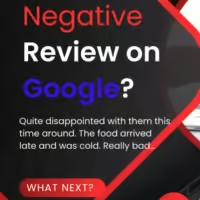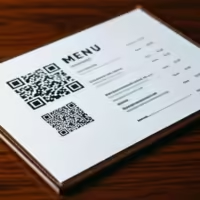
Posted by Reviewtale
- May 12, 2025
- 195
- 0
How to use customer Reviews to drive more orders for your Cloud Kitchen

In today’s highly competitive food industry, cloud kitchens, also known as ghost kitchens or virtual kitchens, face a unique challenge. Lacking a physical storefront to draw in walk-in customers, cloud kitchens depend solely on their online presence to build brand awareness and boost sales. In this landscape, online reviews have emerged as a critical weapon for standing out, building trust, and increasing order volumes.
Below, we delve deep into how cloud kitchens can effectively leverage online reviews to not just survive but thrive.
Why Reviews Matter More for Cloud Kitchens
Unlike traditional restaurants, which have a physical presence in the market and gradually build brand identity and reputation through word-of-mouth, a cloud kitchen lacks this tangible visibility. This absence of a storefront limits the traditional methods of brand discovery that brick-and-mortar restaurants enjoy. For a cloud kitchen, online presence becomes crucial, making digital reputation the primary means by which consumers evaluate and choose where to order food.
In fact, 93% of consumers read online reviews before making a purchase decision. Ratings and customer feedback play a pivotal role in influencing where customers choose to dine or order from. In today’s digital age, online reviews serve as the modern equivalent of word-of-mouth and are not only essential for cloud kitchens but for any business with an online presence.
Reviews help build trust, provide social proof, and differentiate cloud kitchens in the highly competitive marketplace on platforms like Zomato, Uber Eats, and Swiggy.
Optimizing Review Collection for Maximum Impact
Encouraging customers to leave reviews should be a proactive part of your post-order process. After every delivery, prompt customers for feedback through follow-up messages via SMS, WhatsApp, or email. Including printed cards with QR codes in your packaging can also make the review process seamless and convenient. To further motivate customers, consider offering small incentives like discount coupons in exchange for their feedback. The more reviews you gather, the more visible your brand becomes on food delivery platforms, thanks to algorithmic boosts. However, timing plays a crucial role—sending review requests 15 to 30 minutes after delivery, when the customer has just enjoyed their meal, makes the message feel personal and relevant, significantly increasing the likelihood of a response.
Let’s discuss the key points to consider when it comes to collecting and managing reviews from customers for your cloud kitchen business.
Personalized Follow-Up Messages
Send tailored follow-up messages to customers shortly after their order is delivered. Address customers by name, reference their specific order, and express genuine appreciation for their business. A personalized touch not only makes customers feel valued but also increases the likelihood that they will share positive feedback.
Here’s the concern: if you rely entirely on food aggregator platforms like Zomato and Swiggy, you’re missing the opportunity to follow up with your customers. These platforms may help boost your sales, but they don’t share customer data with you—meaning you never truly know who your customers are. While there are some smart strategies to overcome this challenge (which we’ll cover in our next article), it’s clear that depending solely on these platforms is not a sustainable way to grow your business.
You can explore platforms like Review Tale, which offers free business listings. While it doesn’t provide delivery services, it allows you to access valuable customer data for future engagement. Additionally, Review Tale does not charge any platform fees on your direct transactions, making it a cost-effective option for growing your cloud kitchen business.
Incentivize Feedback with Creative Rewards
Go beyond standard discounts. Offer unique incentives such as loyalty points redeemable for exclusive menu items, early access to new dishes, or a “mystery box” add-on for their next order. Highlight these incentives in your follow-up communications to encourage satisfied customers to leave reviews.
Example: Send personalized thank-you messages after each order, including a small discount code or a free add-on for their next purchase if they leave a review.
Turn Negative Experiences into Positive Publicity
Proactively address negative reviews by responding publicly and constructively. When a customer updates a negative review after a resolution, request permission to feature their story as a testimonial. This shows your dedication to customer satisfaction while also fostering trust among potential customers.
Gamify the Review Process
Introduce a “review and win” campaign where each review counts as an entry into a monthly prize draw. Prizes could include free meals, branded merchandise, or a behind-the-scenes kitchen tour. Gamification adds excitement and encourages more customers to participate.
Integrate Social Media Engagement
Encourage customers to share their experiences on social media by creating branded hashtags or running photo contests. Feature customer-generated content on your own channels, giving public recognition to reviewers and fostering a sense of community around your cloud kitchen.
Showcase Customer Reviews Prominently
Display recent positive reviews on your website, ordering platforms, and social media pages. This not only provides social proof but also motivates customers to contribute their own reviews, knowing their feedback could be featured.
Surprise and Delight with Packaging
Enhance the unboxing experience with unique, eco-friendly packaging that includes a handwritten thank-you note or a QR code linking directly to your review page. Eye-catching packaging can create a joyful impression and encourage customers to share their experience on social media.
Many cloud kitchen mentors will advise you to invest in impressive packaging to delight your customers. However, always remember—you are the leader of your business, and the final decisions rest with you. Offering memorable packaging can increase the overall cost of your food, which may, in turn, impact customer demand. It’s wise to keep premium packaging as an optional add-on, rather than including it with every order. This ensures fairness for customers who prioritize food quality and quantity over fancy packaging.
Collaborate with Influencers for Review Campaigns
Partner with local food influencers or micro-bloggers and invite them to review your dishes. Their authentic reviews can encourage their followers to try your offerings and leave their own feedback, amplifying your online reputation.
Turning Positive Reviews into Order Magnets
Positive reviews act as powerful endorsements that attract new customers by building trust and credibility. By showcasing glowing feedback prominently on your website and delivery platforms, cloud kitchens can create a compelling first impression that encourages potential diners to place orders. Leveraging these reviews effectively transforms satisfied customers’ voices into magnetic marketing tools that drive consistent growth.
Here are a few ways cloud kitchens leverage positive reviews to attract new customers:
Showcase Testimonials Strategically
Use glowing customer reviews across all channels:
- Website homepage and product pages
- Google My Business (GMB) profile
- Instagram stories and highlights
- Food delivery platform descriptions
Featuring reviews with keywords like “best biryani,” “hot and fresh delivery,” or “great packaging” not only attracts users but helps with SEO and in-app searchability.
Use Review Highlights in Paid Ads
Take snippets from your best reviews and incorporate them into Facebook, Instagram, and Google Ads. This adds authenticity to your paid campaigns and increases click-through rates.
How to Handle Negative Reviews Professionally
Responding to negative reviews with empathy and professionalism can turn a dissatisfied customer into a loyal advocate. Acknowledge the issue sincerely, offer a solution or compensation, and invite further dialogue offline. This transparent approach not only resolves conflicts but also demonstrates your commitment to quality, reassuring potential customers who read the exchange.
Respond Promptly and Politely
A professional response to a negative review shows that we care about customer satisfaction. Acknowledge the issue, apologize, and explain what actions are being taken. Avoid being defensive.
Example:
“Thank you for your feedback. We’re truly sorry to hear about your experience. We’ve already taken steps to ensure this doesn’t happen again. Please DM us your order details so we can make it right.”
Use Negative Feedback to Improve Operations
Each negative review is an opportunity to fix what’s broken. Analyze common complaints such as:
- Cold food
- Delayed delivery
- Missing items
- Poor packaging
Then use this feedback to optimize your kitchen workflow, delivery logistics, and quality control.
Integrating Reviews into Search Engine Optimization (SEO)
Online reviews are a powerful asset for cloud kitchens aiming to improve their search engine rankings and visibility. Search engines like Google consider the quantity, quality, and recency of reviews as important ranking factors, especially for local searches. Positive reviews signal to search engines that your business is active, trustworthy, and delivers quality service, which can help your cloud kitchen appear higher in search results and local map listings.
Schema Markup for Rich Snippets
Add review schema markup on your website pages. This allows Google to display star ratings directly in search results, significantly increasing visibility and click-through rates.
Review-Based Keywords in Content
Use keywords found in reviews like:
- “Best Chinese delivery in [City]”
- “Affordable vegetarian thali”
- “24/7 late night food near me”
Incorporating these into your blog posts, landing pages, and menu descriptions helps capture long-tail search traffic.
Leveraging Reviews on Delivery Apps
Customer reviews on delivery apps are a powerful tool for cloud kitchens to build credibility, attract new customers, and drive repeat orders. Positive ratings and feedback serve as social proof, influencing potential customers as they browse menus and compare options on platforms like Zomato, Swiggy, and Uber Eats. Featuring high ratings and showcasing positive reviews prominently can help cloud kitchens stand out in a crowded marketplace, enhancing brand visibility and boosting order volumes.
Reviews Influence App Rankings
Food delivery platforms use reviews to rank listings. The higher your rating and volume of reviews, the more likely your cloud kitchen is to:
- Appear in top search results
- Be featured in promotional banners
- Win badges like “Top Rated” or “Customer Favourite”
Optimize Profile Based on Feedback
Use review data to adjust:
- Menu item names for better discoverability
- Food descriptions to manage expectations
- Pricing strategy to match perceived value
User-Generated Content for Social Proof
User-generated content (UGC) is a powerful form of social proof that leverages authentic experiences shared by real customers to build trust and credibility for a brand. This content can take many forms, including customer reviews, testimonials, photos, videos, social media posts, and even participation in branded hashtag campaigns. Because UGC is created by actual users rather than the brand itself, it is perceived as more genuine and relatable, making it highly influential in shaping potential customers’ perceptions and purchase decisions.
Ask customers to share:
- Photos of their food orders
- Unboxing experiences
- Dining setups at home
Repost this content on your Instagram, Facebook, and Google listings with credits. This adds authenticity and makes your brand relatable.
Create a Feedback Loop
Creating a feedback loop allows you to continuously gather insights from your customers and use them to improve your services. Encourage reviews, conduct surveys, and monitor social media mentions to understand what diners appreciate and where there’s room for improvement. This ongoing cycle not only builds trust but also helps in fine-tuning the overall dining experience.
- Collect Reviews
- Analyze Feedback Trends
- Improve Food, Packaging, and Delivery
- Inform Customers About Updates
- Encourage New Reviews
This creates a self-sustaining loop of trust and visibility that directly boosts sales.
Train Your Team to Be Review-Aware
Every member of the team-from kitchen staff to customer service-should understand the importance of reviews. Build a review-first culture where quality, punctuality, and professionalism are prioritized to ensure every order has the potential to earn a five-star rating. Regularly train your staff on customer interaction best practices and empower them to resolve issues proactively before they escalate to negative feedback. Celebrate positive reviews as team wins and use constructive criticism from reviews as learning opportunities, fostering a sense of shared responsibility and continuous improvement throughout your cloud kitchen.
Leverage Technology and Analytics
Leverage technology and analytics to gain deeper insights into customer behavior, preferences, and trends. Use tools like POS systems, CRM software, and online review trackers to collect and analyze data. This information can help you make informed decisions, personalize customer experiences, and optimize operations for better efficiency and growth.
- Monitor reviews from multiple platforms in one dashboard
- Analyze sentiment trends
- Set up alerts for negative reviews
- Automate follow-up responses
This allows us to stay closely attuned to how customers perceive us.
The Psychological Advantage of High Ratings
High ratings create a powerful psychological impact on potential customers by building instant trust and credibility. People are naturally drawn to businesses that others have positively reviewed, often associating high ratings with quality and reliability. This social proof influences decision-making and can significantly increase foot traffic and conversions. A rating of 4.5 stars or higher indicates trustworthiness and consistent quality. As a result, customers are more inclined to:
- Trust your brand instantly
- Try your food without hesitation
- Refer your kitchen to friends and family
This leads to an exponential increase in order volume, especially in high-traffic seasons like festivals, weekends, and cricket match days.
Case Studies: Cloud Kitchens Winning with Reviews
Biryani Express, Hyderabad
By adding review prompts and showcasing testimonials, they grew their order volume by 38% in 60 days.
GreenBowl Salads, Bangalore
After addressing consistent packaging complaints mentioned in reviews, their return customers increased by 22%, with a sharp rise in 5-star ratings.
The Midnight Crave, Mumbai
Incorporating review feedback into their ad creatives helped reduce customer acquisition cost (CAC) by 40% while increasing new orders.
Conclusion: Reviews Are the Lifeblood of Cloud Kitchens
For cloud kitchens, reviews are more than just comments—they are digital currency. Harnessing their power can elevate brand credibility, improve discoverability, and dramatically increase order volume. By embedding review strategies into every level of the business—from kitchen operations to digital marketing—cloud kitchens can build a trusted, visible, and profitable brand in the ever-evolving food delivery landscape. High ratings and consistent feedback not only guide improvements but also influence customer decisions, making them a key driver of success.
This is where Review Tale steps in as your growth partner. Our platform is designed to spotlight your kitchen, amplify positive customer experiences, and boost your online reputation. With expert tools, strategic review handling, and targeted visibility, we help you turn every rating into a powerful marketing asset. Don’t let your cloud kitchen go unnoticed—join Review Tale today and take control of your digital presence to drive more orders, more trust, and more growth.
Recommended Posts
- Feb 1, 2025
- 351 read
How Behind-the-Scenes Food Content Boosts Visibility & Engagement Table of ContentsIntroductionThe Power...
Read Article- Jan 29, 2025
- 322 read
7 Effective Ways to Use Customer Reviews to Build Trust Table of...
Read Article- Jan 19, 2025
- 762 read
The Story Behind Your Business: How Sharing It Attracts Customers & Builds...
Read Article- Jan 18, 2025
- 501 read
Unforgettable Dining Experiences: How a Unique Selling Proposition Can Elevate Your Restaurant...
Read Article- Jan 16, 2025
- 1253 read
What Unique Aspects of Your Restaurant, Cloud Kitchen, or Café Set You...
Read Article- Jan 12, 2025
- 660 read
How to Remove Negative Reviews From Google? Negative reviews on Google can...
Read Article- Jan 3, 2025
- 344 read
Table of Contents IntroductionThe Origins of Fast FoodNutritional Myths and RealitiesConvenience vs....
Read Article- Dec 25, 2024
- 345 read
6 Essential Steps for Restaurants: Masterfully Choose the Right Target Customers Choosing...
Read Article- Dec 5, 2024
- 746 read
10 Powerful Tips for Innovative Menu Design: Trends You Need to Know...
Read Article- Nov 26, 2024
- 456 read
Introduction In today's fast-paced world, where convenience often trumps tradition, the concept...
Read Article- Nov 16, 2024
- 318 read
Tips and Tricks to Optimize Your Restaurant Profile: Improve Your Online Visibility...
Read Article











